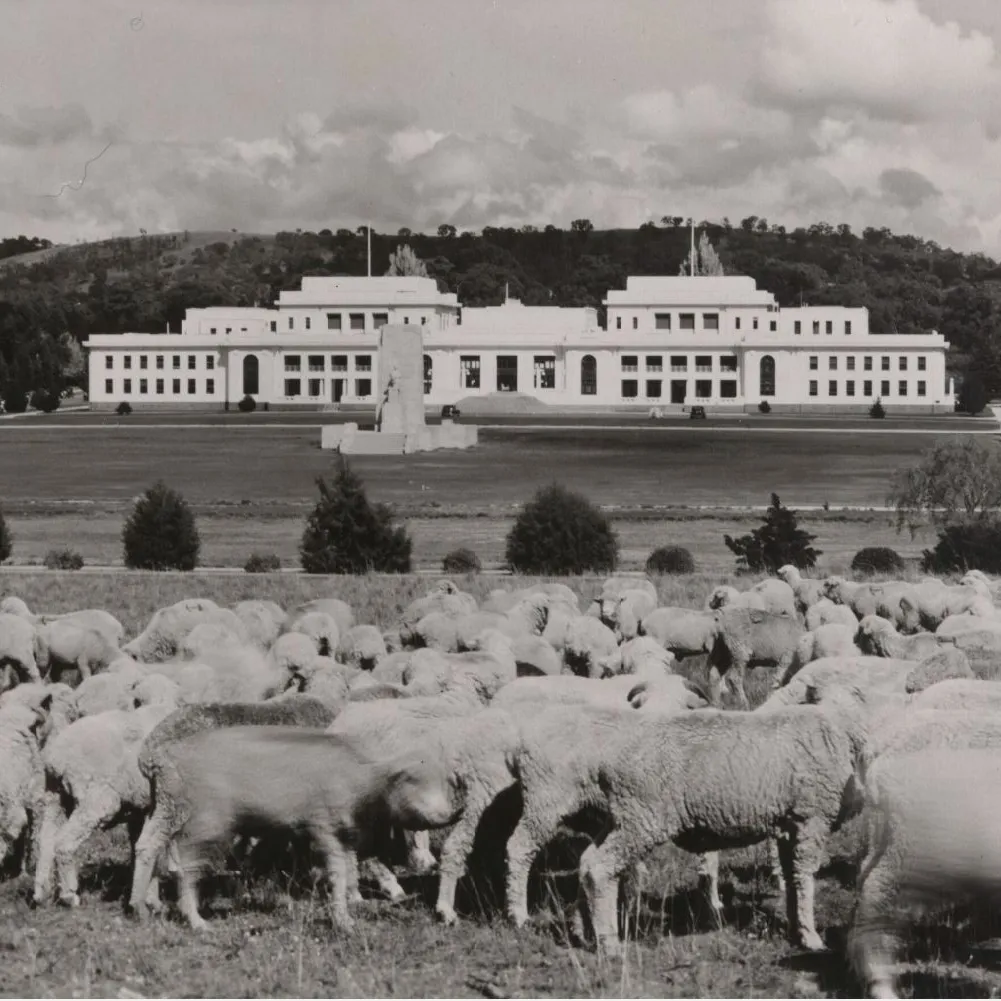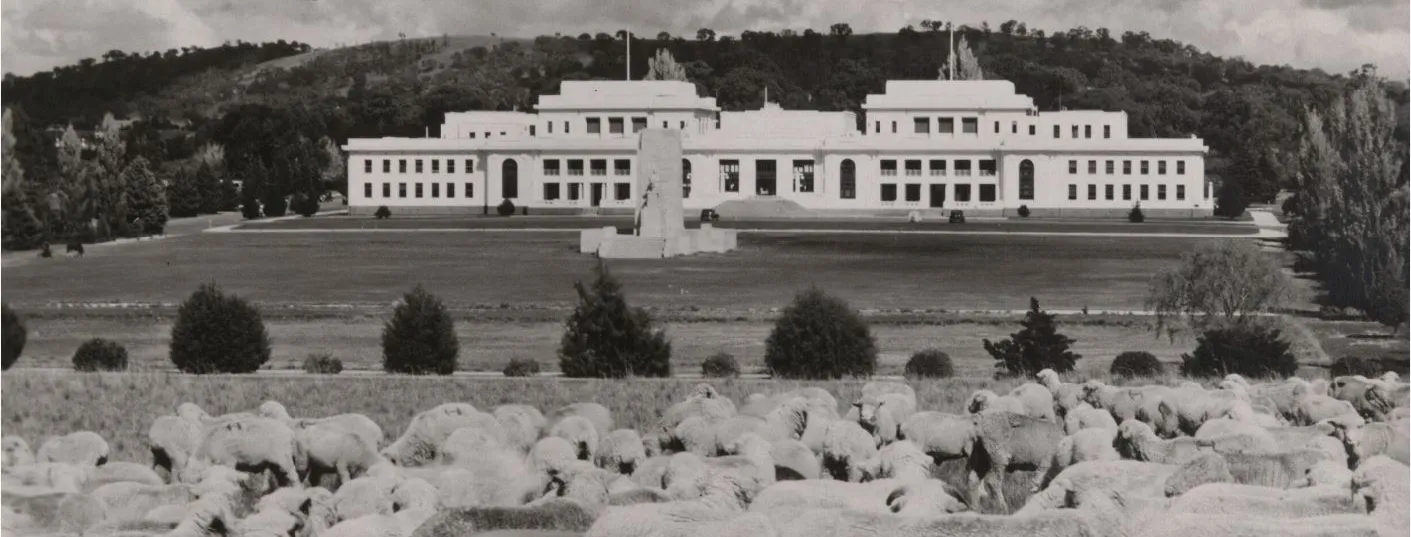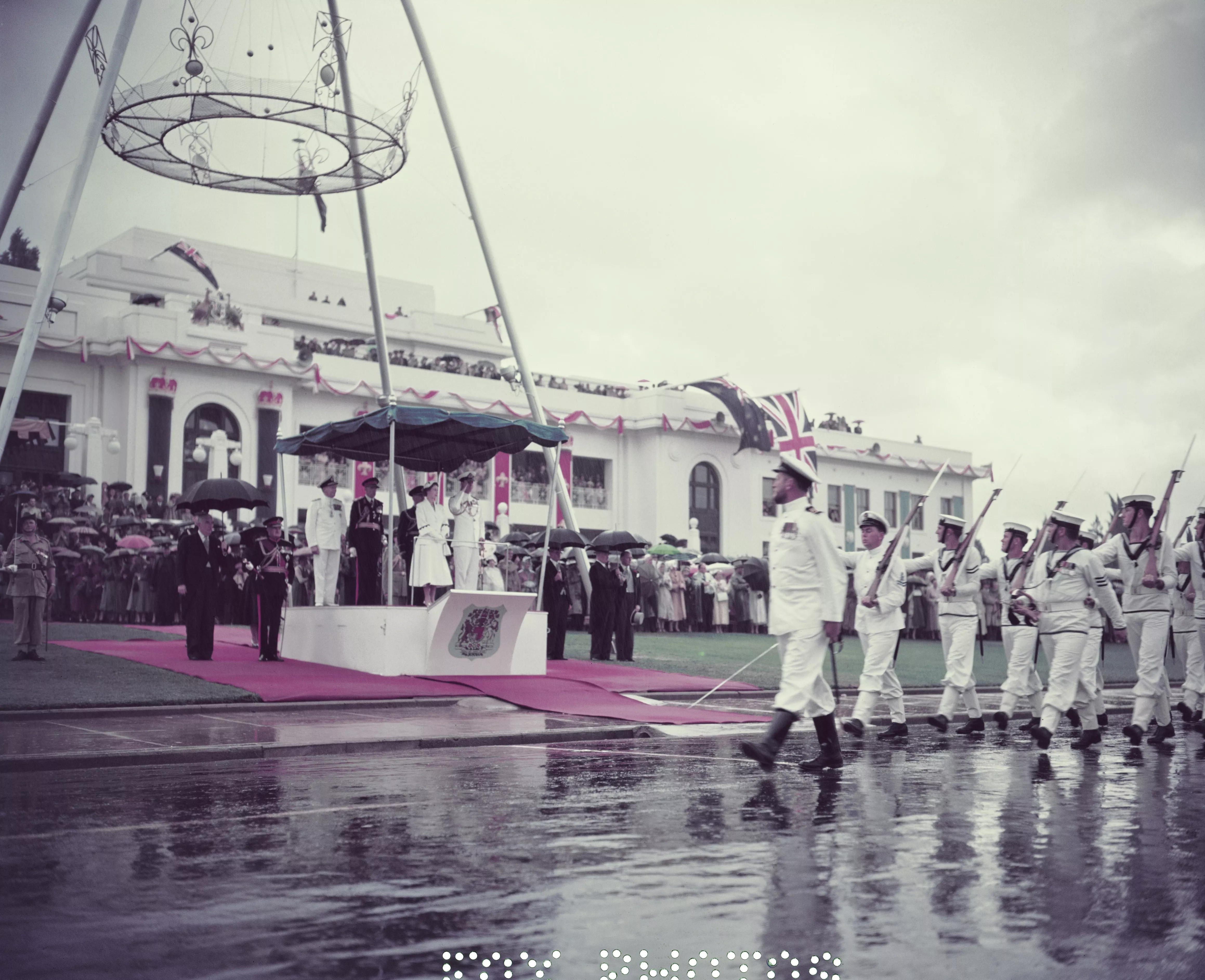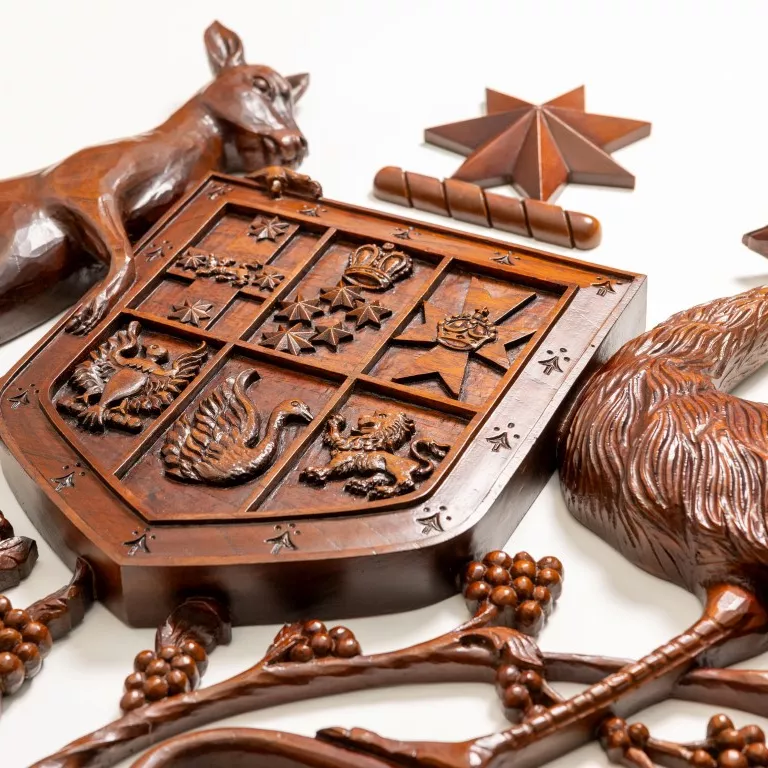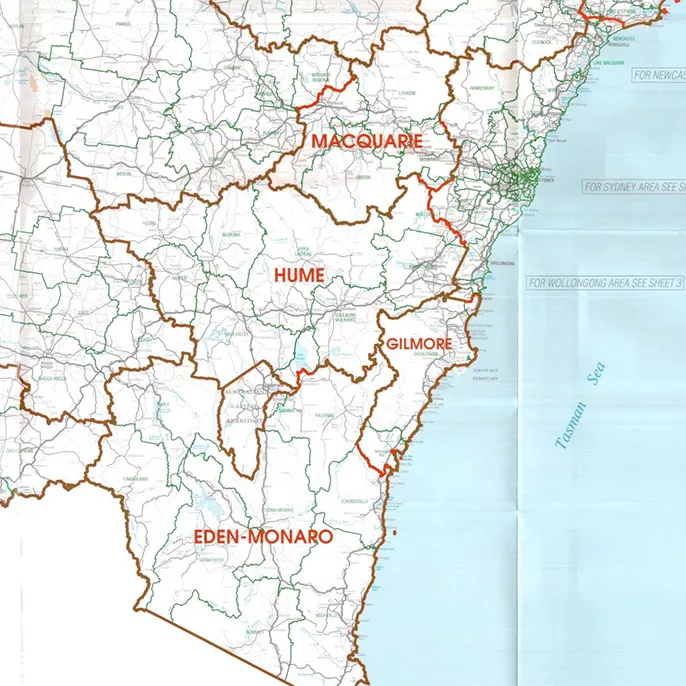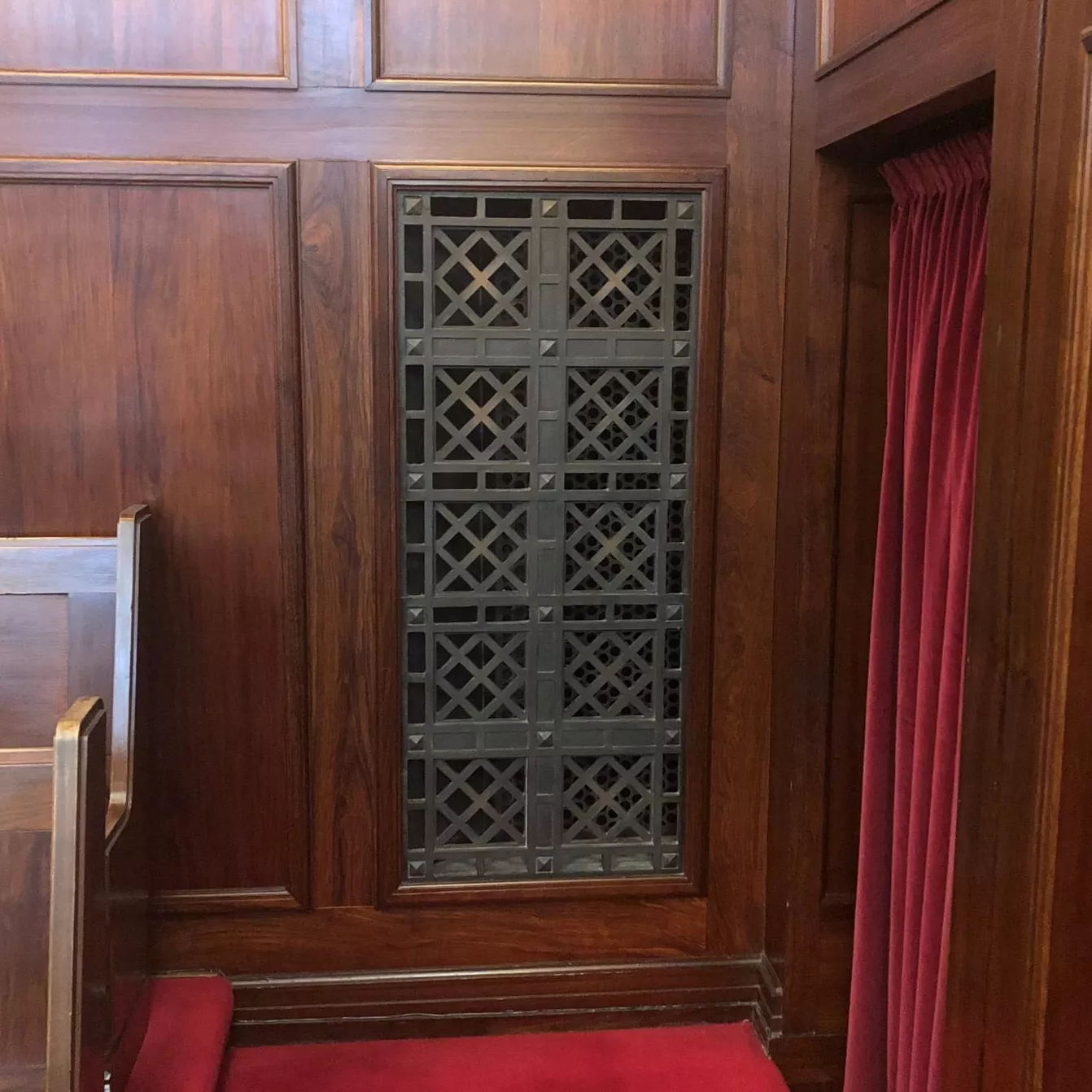The King George V memorial
- DateMon, 17 Oct 2011
In 1936, the Commonwealth government approved a memorial to the recently deceased King George V.
The memorial was designed by sculptor George Rayner Hoff and architect Harry Foskett. Their design was chosen from three submitted to the government. The government had chosen the memorial’s site as directly in front of the Provisional Parliament House, fifty metres from King George Terrace. Neither Hoff nor Foskett was fond of this location. They felt a location off to the side would be more suitable. Nevertheless, they persisted and work began in 1940. Hoff, however, died in 1937, before he received his official commission. In his place, John E Moorfield was chosen to complete the memorial using Hoff’s design.
Though the bulk of the structure was completed by 1941, the onset of the Second World War delayed the casting of the bronze plaques and the bronze figure of King George. As a result, for more than a decade, the monument was in place, but only half-completed. The stone figure of Saint George (chosen as a symbolic comparison to King George because of the latter’s role in leading Britain during World War I) and the pedestal remained in place while work was delayed on the bronze casting. The Saint George figure faced away from Parliament, towards the Australian War Memorial, which was being completed at the same time.
As early as 1943, some suggested relocating the memorial as Hoff had originally envisioned. Like Hoff, Moorfield did not live to see the final unveiling of the finished memorial – he died in 1945. The monument was finally unveiled on 4 March, 1953, seventeen years after it was first approved. Located on the central land axis in line with the Griffin plan, the figure of King George faced Parliament, while the figure of Saint George faced the War Memorial, symbolic of George V’s leadership of his country during the First World War. When unveiled, the monument stood atop a large podium, which is easily visible in photographs.
In 1968, the monument was moved to its current location, more in line with Hoff and Foskett’s wishes. The main reason it was relocated was because it blocked the land axis and the uninterrupted vista from Parliament House to the Australian War Memorial. Standing on the steps of the War Memorial today, it is difficult to imagine a large monument blocking the view on one side of the lake!
In his book on the history of Canberra, Eric Sparke gives the credit for moving the monument to Doug Anthony, at the time the Minister for the Interior and later Deputy Prime Minister (and chairman of Old Parliament House’s Advisory Council). According to Sparke:
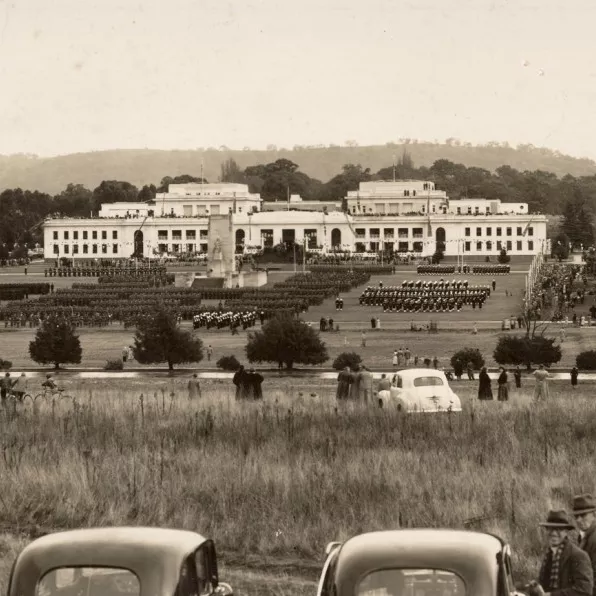
The Museum has recorded an Oral History interview with Doug Anthony, in which he describes the process of moving the memorial.
The King George V memorial is not just a memorial to the King. It is also a war memorial, commissioned before the Australian War Memorial was completed. The monument has two distinct sides – the King George side, which honours both the reign of the monarch and the Australian federation, and the Saint George side, honouring Australia’s contribution to the First World War. That war was still a recent memory when the monument was commissioned; the bloodiest war Australians had seen to that time, it was still fresh in the minds of many Australians, including many members of the Australian Parliament. The statue served to commemorate the war and honour the dead, as well as King George’s role, as the titular head of the British Empire, in providing spiritual and moral leadership. The monument also served to honour Federation, with important figures like Sir Henry Parkes, Sir Samuel Griffith, Sir Edmund Barton and Sir George Reid represented in bronze plaques around the base of the statue. The monument also commemorates George V as having opened the first Commonwealth Parliament in Melbourne in 1901.
This rare photograph by R C Strangman was recently purchased for the Museum’s Research Collection. It shows the ceremony to officially open the monument on 4 March 1953. The large military parade demonstrates the ceremony’s importance, and the photograph, taken from roughly where the modern-day Science and Technology Centre (Questacon) stands, is notable for showing what the parliamentary zone looked like nearly sixty years ago. The large podium can clearly be seen.
The Research Collection contains a number of images of the memorial in its early days, including some of its construction. Also in the collection are postcards showing the memorial in its original location in front of Parliament House and an interesting photograph of the monument’s construction, taken around 1942.
Of course, the memorial is not the only monument to King George V in and around Old Parliament House. In the centre of King’s Hall stands the King himself – a bronze statue of George V by sculptor Bertram Mackennal.

